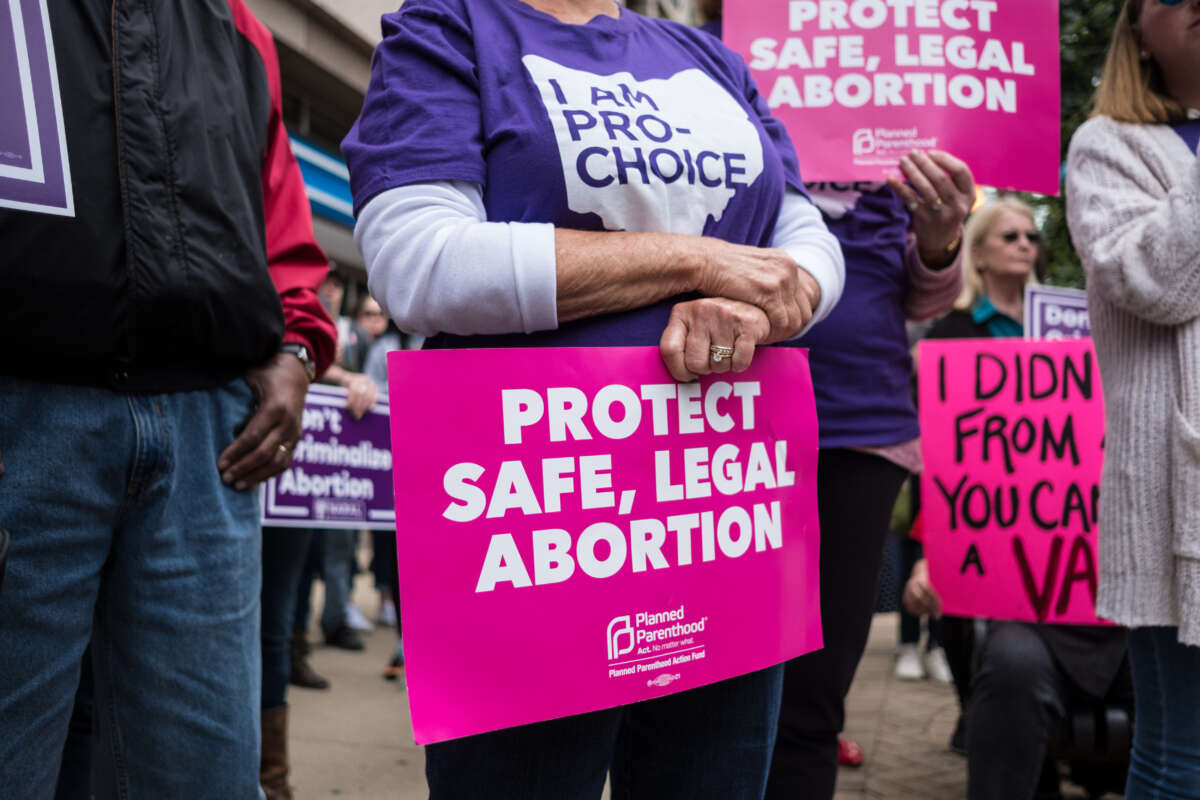A new poll published this week demonstrates that a majority of Ohio residents support expanding abortion rights beyond the six-week ban that’s currently on the books, and will likely back a voter-led initiative that’s set to appear on the ballot.
Voters will decide this fall whether the state constitution should be amended to enshrine abortion rights, as a signature-driven initiative surpassed the 400,000 signatures needed to place the question on November’s general election ballot, garnering 700,000 signatures in total.
The proposed amendment states that “every individual has a right to make and carry out one’s own reproductive decisions, including but not limited to decisions on contraception, fertility treatment, continuing one’s own pregnancy, miscarriage care, and abortion.” The amendment would protect abortion rights up to fetal viability, generally assumed to be around 22-24 weeks after a person becomes pregnant.
In a USA Today/Suffolk University poll published this week, 58 percent of Ohio voters said they wanted the measure to pass, while only 32 percent said they were opposed to the amendment.
In almost every demographic the poll examined, including categories based on age, race, education level and gender, support for the measure outweighed opposition, often by double-digit margins. Only on the question of political affiliation was there one group — Republican voters — that stood opposed to the amendment, but even a third of those respondents said they backed passage of the initiative, despite their party’s vehement opposition to reproductive rights.
If the amendment passes, it would undo a 2019 “trigger law” in the state that went into effect last summer after the U.S. Supreme Court upended federal abortion rights previously protected by the 1973 Roe v. Wade decision. Currently, Ohio’s abortion law bars the procedure after the sixth week of pregnancy, a timeframe in which many people are not even aware they are pregnant.
Although the measure appears likely to pass, it could be blocked if a separate constitutional amendment question passes in August.
In response to the abortion rights initiative, which is set for a vote in the general election, Republican lawmakers in the state legislature placed their own question on the primary election ballot, which, if passed, would mean that all future ballot questions must obtain a supermajority of 60 percent voter support in order to become an official state constitutional amendment.
Many have condemned the action as a blatant attempt to block the abortion initiative, with critics alleging that Republicans placed the measure on the primary ballot so it could pass during a race that many voters in the state don’t participate in. (Only 8 percent of eligible voters took part in Ohio’s 2022 primary election.)
Even if the legislative-driven measure is successful, however, there’s a good chance the abortion rights amendment could still pass in November. Given that the poll has a margin of error of 4.4 points, it’s possible, right now, that more than 60 percent of voters in Ohio are supportive of the abortion rights amendment. If that number is maintained into the fall, the measure could pass, regardless of whether or not the primary race’s ballot question passes.
If the initiative succeeds and the abortion rights amendment doesn’t pass by 60 percent or more votes, activists will likely seek to bring the matter to the courts, as the signature drive began well before the August primary ballot question was established. Ohioans who signed the abortion petition for a ballot initiative supported it with the idea that a “50-percent plus one vote” threshold was all that was necessary for it to pass. The judiciary might rule that this is still all that’s required — even if the August initiative passes — because that stipulation was part of what inspired people to take part in the signature drive.
The initiatives could also have implications for the presidential election next year. If the abortion rights amendment passes by wide margins, for example, presidential candidates (particularly Republicans) coming through the bellwether state would likely tip-toe around the issue to avoid alienating voters. It could also help pro-abortion candidates win in a state that has trended “red” in the past several election cycles.
Several abortion-related elections have taken place across the country since the fall of Roe, with virtually all of them showing that most Americans believe abortion rights should be protected.
24 Hours Left: All gifts to Truthout now matched!
From now until the end of the year, all donations to Truthout will be matched dollar for dollar up to $18,000! Thanks to a generous supporter, your one-time gift today will be matched immediately. As well, your monthly donation will be matched for the whole first year, doubling your impact.
We have just 24 hours left to raise $18,000 and receive the full match.
This matching gift comes at a critical time. As Trump attempts to silence dissenting voices and oppositional nonprofits, reader support is our best defense against the right-wing agenda.
Help Truthout confront Trump’s fascism in 2026, and have your donation matched now!
